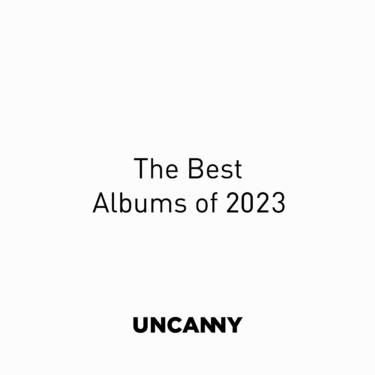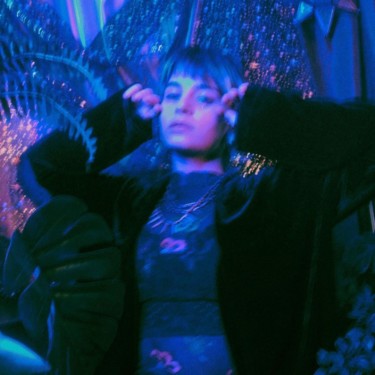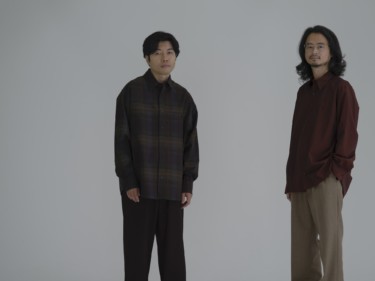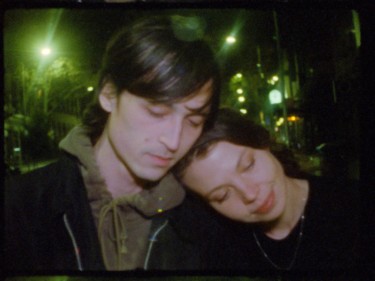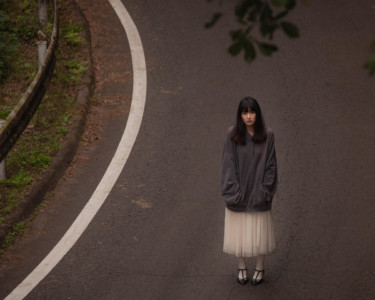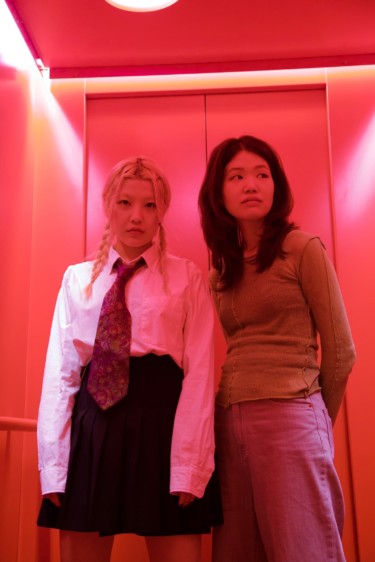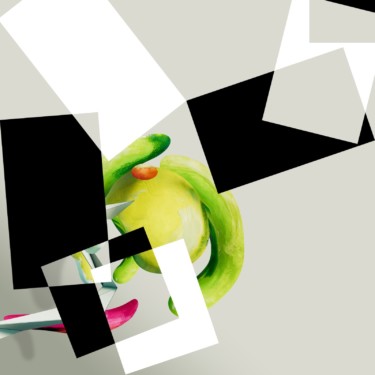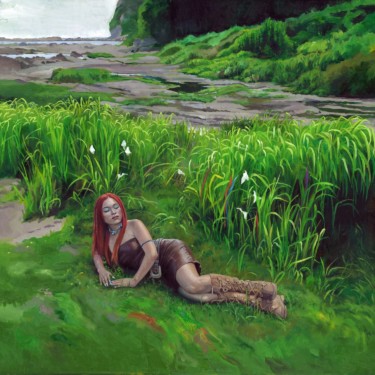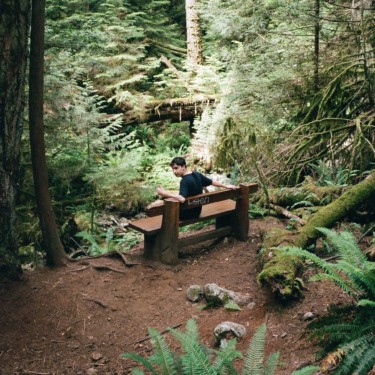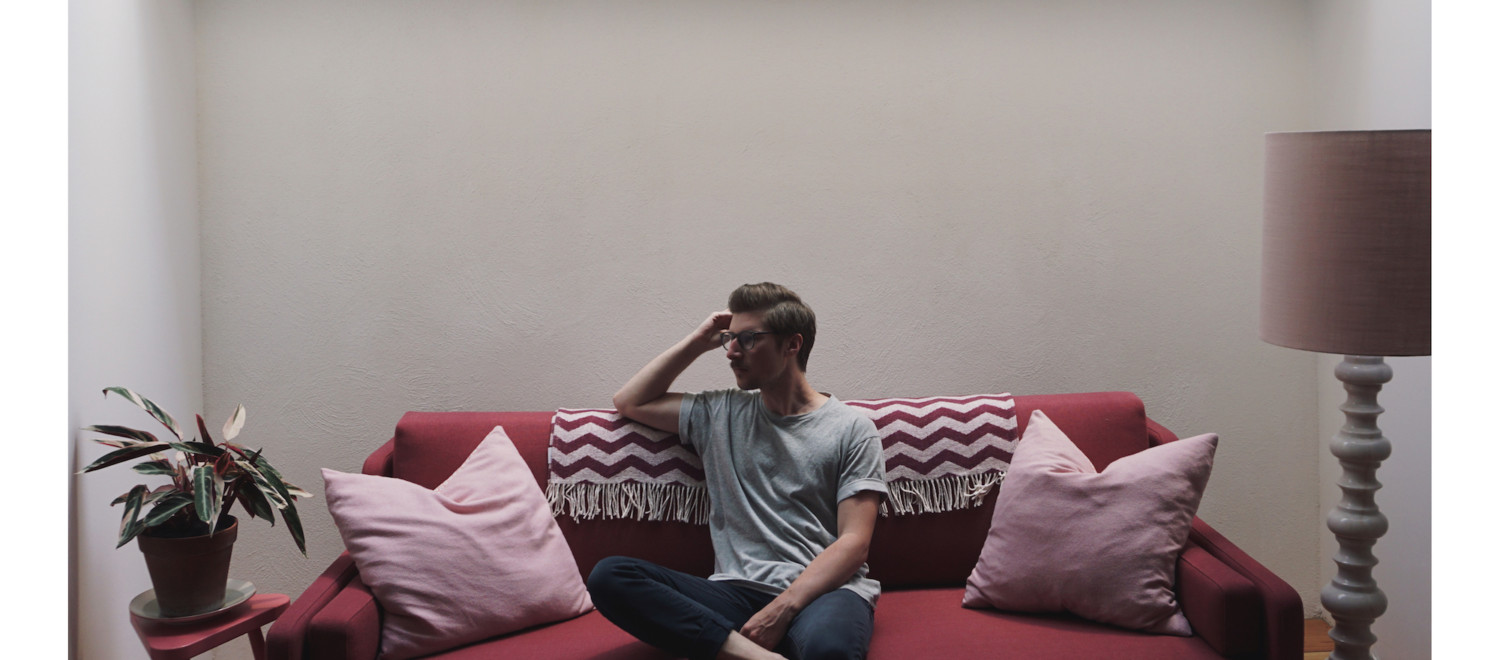
- INTERVIEWSDecember/17/2018
[Interview]Jamison Isaak- “Cycle of the Seasons”
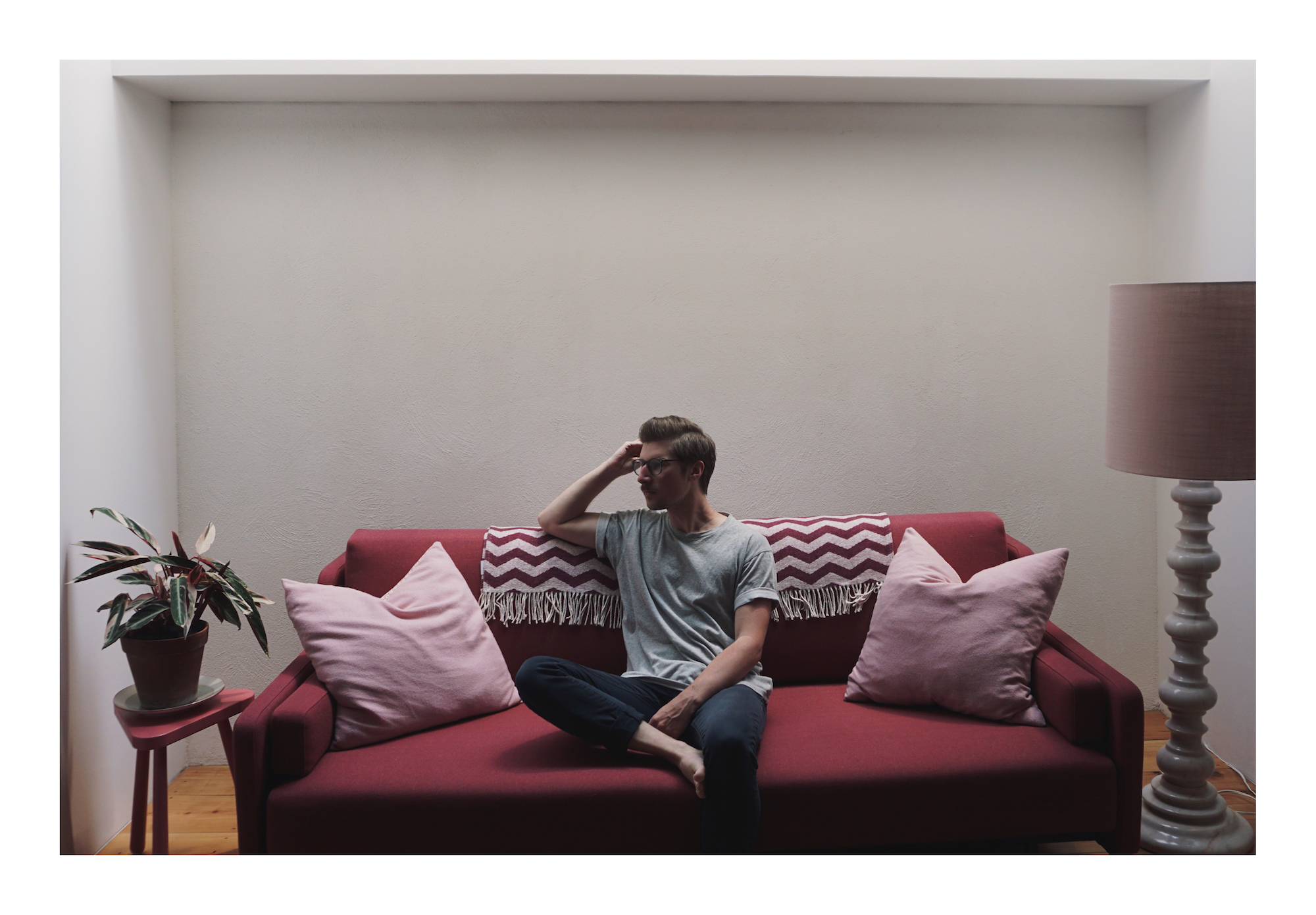
Teen Dazeとして知られる、カナダ、ブリティッシュコロンビアを拠点に活動する音楽家、Jamison Isaak(ジャミソン・イサーク)。本作『Cycle of the Seasons』は、彼がその本名であるJamison Isaak名義で、2018年2月から自身のレーベル〈FLORA〉のBandcamp上で発表した全3作品をコンパイルした作品集として、日本のレーベル〈PLANCHA〉からリリースされている。また今作は、Teen Daze名義の作品よりさらにアンビエントやミニマルミュージックに踏み込んだ作品になっており、自身が語るように成熟した極めて美しい楽曲たちが収録されている。
2019年に向けてTeen Dazeとしての新作のリリースも発表したばかりのJamison Isaak。今回のインタビューでは、Jamison IsaakとTeen Dazeの名義の違いや本作のテーマ、また制作背景などについて、その詳細を聞いてみた。
__あなたはTeen DazeやPacific Coliseumなど、様々な名義で活動しています。本名であるJamison Isaak名義で作品を発表した経緯を教えてください。
今がちょうどその時だと思ったんだ。はっきりとは説明できないけどね。僕は2017年の多くの時間を“Teen Dazeモード”で過ごしていて、そこから離れて少し休む必要があった。でもレコーディングは大好きだし、“Teen Dazeモードでなくとも曲を書き、レコーディングをし続けるには自分の名前で発表するのが完璧な方法に思えた。それに、Teen Dazeについては、それはいつも、何かノスタルジックのようなものや、若く瑞々しい感覚を与えていると思っているんだけど、僕が本名でリリースする音楽は、Teen Dazeとしての僕の音楽よりも、もっと大人の成熟したものだと感じている。
__今作『Cycle of the Seasons』は、アコースティック主体のネオ・クラシカル、アンビエントに接近した作品です。2018年2月から発表したすべての作品をコンパイルした今作、すなわちJamison Isaakとしての作品には、具体的にどのようなテーマがありますか。
一年を通して季節が変わるごとに、僕は自分のインスピレーションと創造のエネルギーが爆発していることに気づいたんだ。はじめの2つのEPの曲は、太平洋北西岸の雨が多く灰色の空をした冬の季節に触発されたものが描かれている。『Spring Patterns 1』はまさに、春からインスピレーションを受けている。だから作品を通して聴けば、冬から春へ変化しているように聞こえるはずだよ。
__アンビエントについて語られることのある、沈黙ではない、音楽における一種の静けさをどのように捉えていますか。今作には最小限の音数、音の残響、穏やかな音像などの特徴があります。
音楽を作る時に、沈黙をその中に取り入れることは本当に難しい。ミニマルでいて、さらにインパクトのある音楽を作れる人たちには大きな敬意を抱いているよ。僕はいつもやりすぎてしまう。でも、もっとミニマルな音楽を聴くことでたどり着き、得られる穏やかさと安らぎがあると思う。僕はそれを創作において達成するために努力している。『Cycle Of The Seasons』はまさにミニマルなアンビエント音楽を作ることによって、それに最も近づいたと思っているよ。
__自然に囲まれた場所での暮らしは、創作活動にどのような影響を与えていますか。また、都会での生活を選ばない理由を教えてください。
自然の中での生活は、僕にとって重要なことなんだ。それは創作のインスピレーションのためだけでなく、健康でい続ける方法でもある。ハイキングに出かけ、森を歩き、湖を泳いで過ごす時間は、身体的に健康でいられるだけでなく、精神面や感情面においても同じ。僕は健康的になればなるほど、より創造的になっていくんだ。本当に数少ないけど、住むことを想像できた街はある。東京は間違いなくその中の一つだね。けれど、今生きている世界の一部で考えるなら、僕は街よりも自然に近い方がずっと好きなんだと思う。
__Teen Dazeとしての前回のインタビュー(2017)で「僕は自分自身が世界をもっとポジティヴに捉えることができるように、前向きに聞こえる音を作りたかった」と語っていますが、その表現の姿勢は同じでしょうか。今作について、Bandcampでは「リラックスするための音楽」とも説明しています。
もちろん同じ。前回インタビューに答えた時は、人生において厳しい時期から脱け出そうとしていて、音楽をポジティヴになる源として捉えることが僕にとって重要だったんだと思う。当時に比べてとても健康になった今も、それは音楽を作る上で大切な側面であり続けているよ。
__今作に含まれる過去3作のうち、『EP1』と『EP2』ではピアノを弾き、『Spring Patterns』にはギターのループ音源を使用しています。それぞれを一つの楽器で制作した理由を教えてください。
『EP1』と『EP2』で演奏しているピアノは、僕が冬の間中に聴いていた、ネオクラシカルでミニマルなピアノの音楽に影響を受けている。Nils FrahmやHarold Buddといった聴いていたアーティストとはまた別の場所にあるような音楽を作ってみたら面白そうだと思ったんだ。『Spring Patterns』については、僕のギターアンプといくつかのペダルを組んで、ループをすべて1日で録り終えた。あっという間の出来事で、妻と一緒に近所を散歩した時に感じたことに深く影響を受けている。花を咲かせたたくさんの木々、空気の新鮮さ。これらの感情を反映させた音楽を集めたものを作りたいと思っていて、その時スタジオで用意したのはギターを主体としたものになったんだ。
__『EP1』、『EP2』は一つの単語で表現された楽曲のタイトルが印象的です。それぞれ何かテーマやストーリーがあるのでしょうか。また、冒頭の「Sharalee」とはどのような意味ですか。
もちろん。僕はレコーディングでの最もミニマルな雰囲気を明示したかったから、極めてシンプルなタイトルを持つことが理にかなっていた。「Sharalee」は実はフォトグラファーをやっている僕の友達のことなんだ。彼女が僕に、彼女のウェブサイト用に何か音楽を作ってくれないかと依頼してきて、「Sharalee」のコード進行は元々その一部として書かれたものなんだ。友人への良い抒情詩になったと思う。
__近年、あなたの作品にミックスやマスタリングで参加している Jonathan Anderson(ジョナサン・アンダーソン)が、今作ではスティールギターでも参加していますが、彼との制作はどのような影響をあなたの作品に与えていますか。
彼は素晴らしい音楽家だよ。彼のスタジオはとても落ち着きのある場所で、僕たちは友人として、また仲間としてとても良い関係を築いている。彼の演奏はとても滑らかで、2つのEPで彼が演奏することはとても自然なことのように感じた。間違いなく、僕の今後の作品でも彼の演奏をもっと聞くことになるよ。
__2011年に日本のレーベル〈PLANCHA〉から、Teen Daze名義の『A Silent Planet』を発表して以降、継続して作品を発表しています。〈PLANCHA〉は、今年10周年を迎えています。同じレーベルと長く付き合うことに関してどのように考えていますか。
〈PLANCHA〉は、僕にとって特別な存在だよ。何年もこの業界で、いろんな人たちと仕事をしてきたけれど、Oshi (PLANCHA代表)とは、最も長く一緒に仕事をしてきた。彼は寛大で、僕が日本を訪れた時に素晴らしいホストをしてくれるだけでなく、彼のレーベルのアーティストとしてとても気を配ってくれる。これからもずっと長く一緒に仕事していくのを楽しみにしているよ。
__今後も、Jamison Isaak名義の作品は発表する予定はありますか。また、もし発表する場合、どのような作品を考えているか教えてください。
もちろんだよ。Hiroshi Yoshimura(吉村弘)の『Wet Land』にインスパイアされた曲を集めた作品があるんだけど、ある特定の自然現象をもとにした作品集を作りたかったんだ。僕は今、新しいTeen Dazeの制作にとても忙しいんだけど、この作品を来年のどこかで発表できたらいいなと思う。
You create many works under the names of Teen Daze, Pacific Coliseum and so on. Please tell us the reason why you started releasing works under the real name of Jamison Isaak.
It just felt like the right time! I can’t really explain it. I spent a lot of 2017 in “Teen Daze-mode”, and I just needed a break from it. But recording music is one of my favourite things in the world, so releasing under my own name felt like the perfect way to still write and record, but not have to be in “Teen Daze-mode”. Also, when I think about it, there’s something about the name Teen Daze that will always give people a certain nostalgic, or youthful feeling; the music I release as Jamison Isaak feels more “mature” than my music as Teen Daze.
“Cycle of the Seasons” seems to approach acoustic music including neo-classical and ambient. What are the specific themes in Jamison Isaak’s works like this album which complied all your works you released from February 2018?
Over the years, I’ve come to realize how whenever the seasons change, I get a burst of inspiration/creative energy. The songs from the first two EPs were both written and inspired by the winters in the Pacific Northwest (lots of rain, and grey skies), and Spring Patterns 1 obviously takes its inspiration from Spring. So if you listen through the entire collection, it should feel like the changing of Winter to Spring.
It is sometimes said that ambient music has kind of serenity in music but not silence. How do you think of this? This album seems to have some features such as minimum number of sounds, reverberation of sounds and calm sound images.
I find it very difficult to work silence into the music I make; I have great respect for people who can create minimal, yet impactful, music. I find that I over-do it. But there is so much peace and relaxation to be found, and gained, from listening to more minimal music. It’s something I strive to get better at creating. I do think Cycle Of The Seasons is the closest I’ve come to making truly minimal ambient music well.
How your creation is affected by the life in nature? And could you tell us why you don’t choose the life in urban city?
Life in nature is important to me, not only as a creative inspiration but also as a way to stay healthy. Spending time going on hikes, forest walks, swimming in lakes, these are all ways that I’m able to not only stay healthy in a physical way, but also in a mental and emotional way. The healthier I stay, the more creative I tend to be. I think there are a very small number of cities that I could envision living in (Tokyo is definitely one of them), but for the part of the world I’m living in now, I would much prefer to be closer to nature, than to the city.
In last our interview, you told us “I wanted to create positive sound, so that I can capture the world more positively myself”. Do you have the same mind? You explain about this album on Bandcamp “music intended for relaxation purposes”.
Definitely! I think when we spoke last time, I was coming out of a very difficult chapter in my life, and it was important for me to have music be a source of positivity in my life. While I do feel much healthier now, I still think it’s an important facet of making music.
You played the piano in “EP1” and “EP2,” and used guitar loops in “Spring Patterns”. Why did you take just one musical instrument on each song?
The piano playing in EP1 and EP2 was inspired by the music I had been listening to throughout the winter, which was mostly neo-classical, minimal piano music. I thought it would be fun to try my hand at creating music that might sit well aside those artists I had been listening to (like Nils Frahm, or Harold Budd). As for Spring Patterns, I set up my guitar amp and a series of pedals, and recorded the loops all in one day. It happened very quickly, and was deeply inspired by the walks my wife and I were taking through our neighbourhood. Lots of trees with flowers blooming on them, a freshness in the air. I wanted to create a collection of music that echoed those feelings, and the setup I had in my studio at that time was a guitar-based one.
It’s very striking for us that each song title of “EP1” and “EP2” has only one word. Do these each track have any themes or stories? What does the first track name “Shararee” mean?
Yes definitely: I wanted to really commit to the minimalist vibe of the recordings, so having very simple titles just made sense. Sharalee is actually a photographer friend of mine. She commissioned me to create some music for her website, and the chord progression from “Sharalee” was originally written for that commissioned piece. I thought it would be a nice ode to my friend.
Jonathan Anderson, who has got in your works as mixing and mastering in the recent years, played the steel guitar on this album. How did it influence your works?
He’s amazing. His studio is such a place of calm, and we have a great relationship, both as friends and as peers. His playing on Anew just came so smoothly, and it felt so natural to have him play on the two EPs. You’ll be hearing more of his playing on future works of mine, undoubtedly.
You have been continuing to release works from Japanese music label PLANCHA since you released “A Silent Planet” as Teen Daze in 2011. PLANCHA marks 10th anniversary. How is the long relationship with same music label affecting your music activities?
PLANCHA holds a very special place in my heart. Over the years, I’ve worked with many different people in the industry, but Oshi (from PLANCHA) is the person I’ve been working with the longest. He has a huge heart, and has not only been an amazing host when I’ve visited Japan, but he has taken such good care of me as an artist on his label. I look forward to many, many years of working together.
Do you have any plans to release next works under the name of Jamison Isaak? If you have, please tell us what kind of work you are thinking.
Yes! I have a collection of songs inspired by Hiroshi Yoshimura’s “Wet Lands” album; I wanted to create a collection of recordings based on a specific natural feature. I’m very busy with new Teen Daze music, but I hope to release this collection sometime next year.
Photo by Paulina Isaak
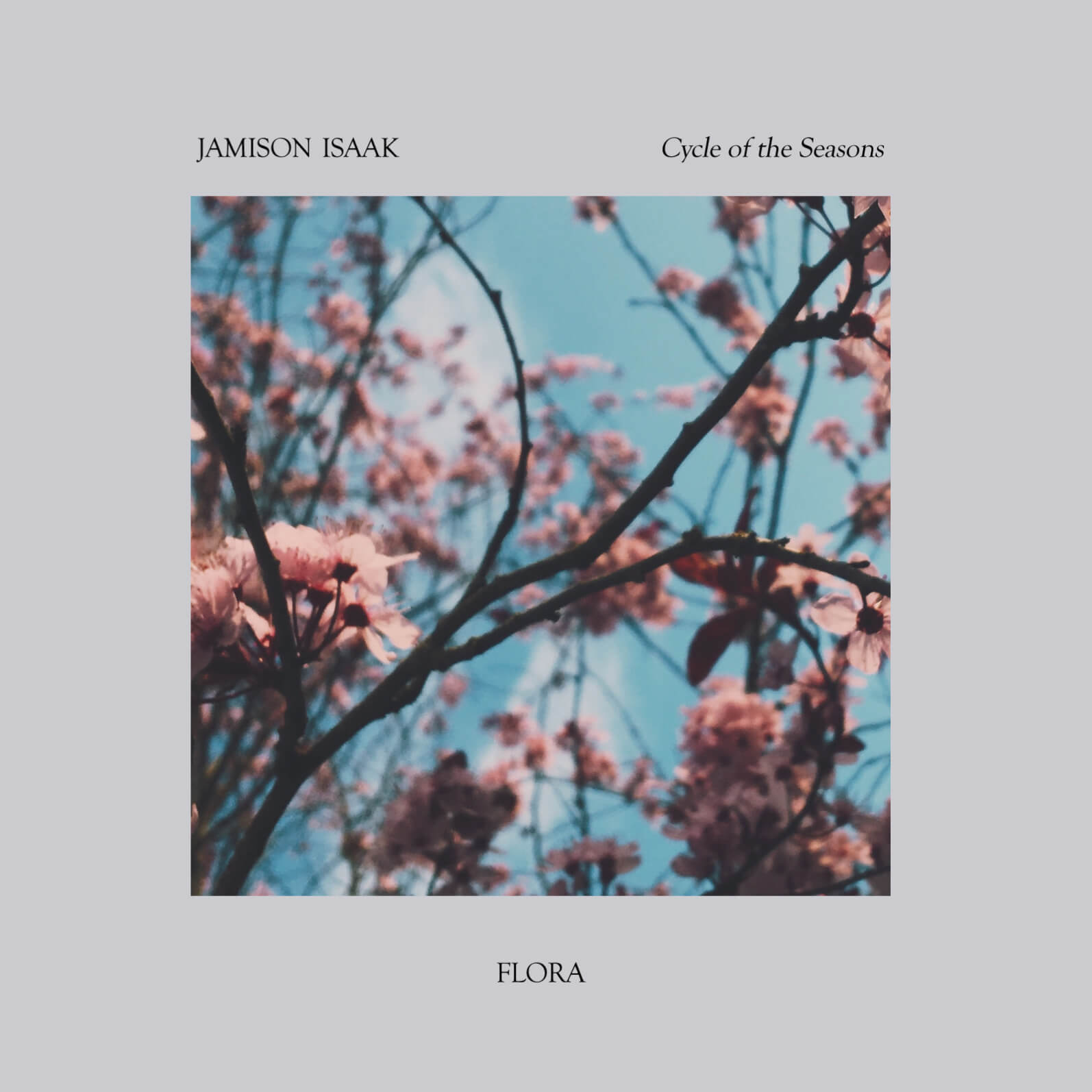
Cycle Of The Seasons:
01. Sharalee
02. Upstairs
03. Wind
04. More
05. First
06. Us
07. Animals
08. Peace
09. Pattern 1
10. Pattern 2
11. Pattern 3
12. Pattern 4
13. Pattern 5
14. Pattern 6
15. Pattern 7
16. Pattern 8
Link: PLANCHA
![[Interview]Jamison Isaak- “Cycle of the Seasons”|UNCANNY](https://uncannyzine.com/wp-content/themes/uncanny_v5/common/images/logo.svg)

